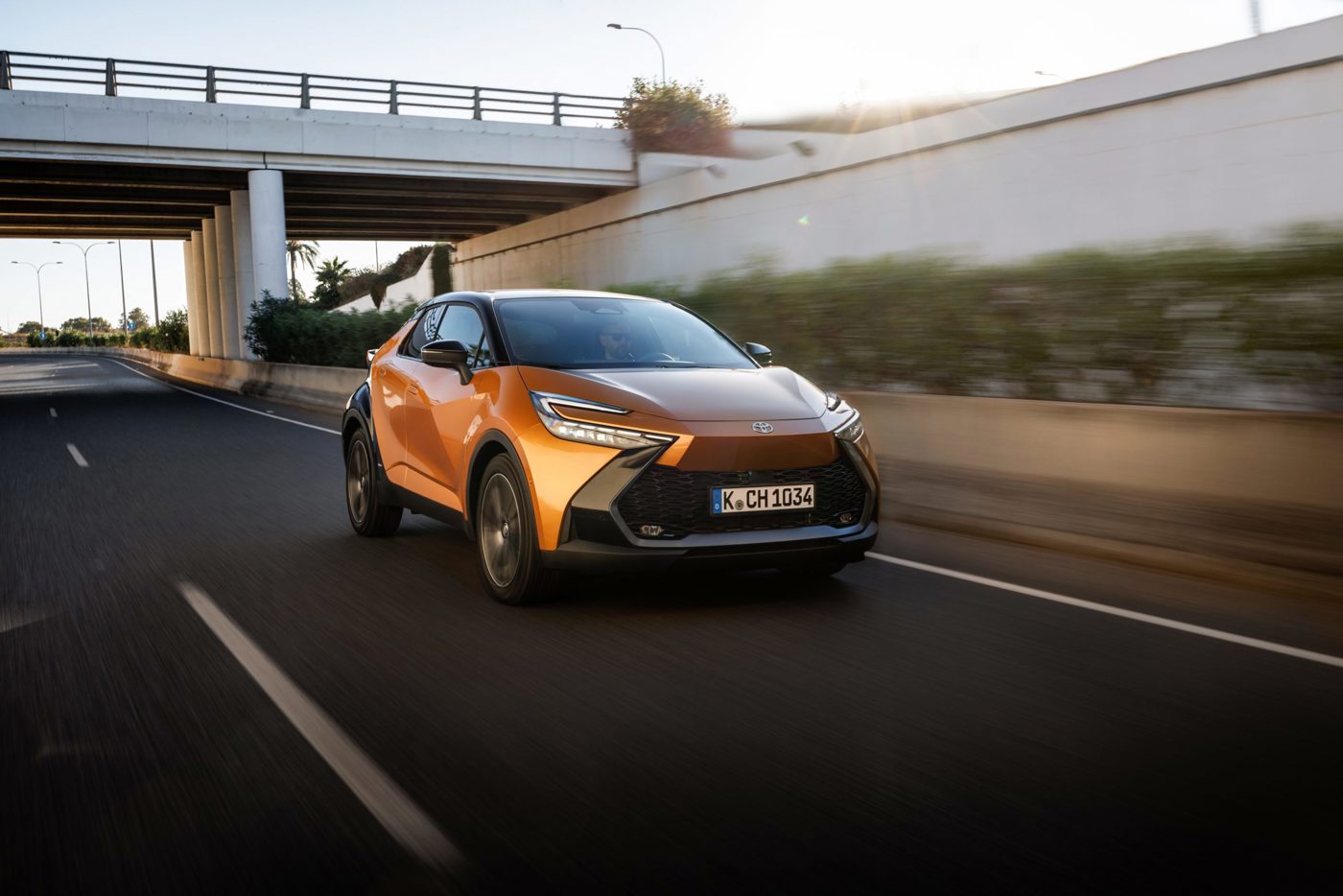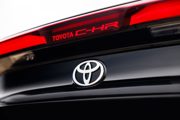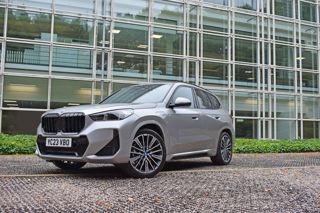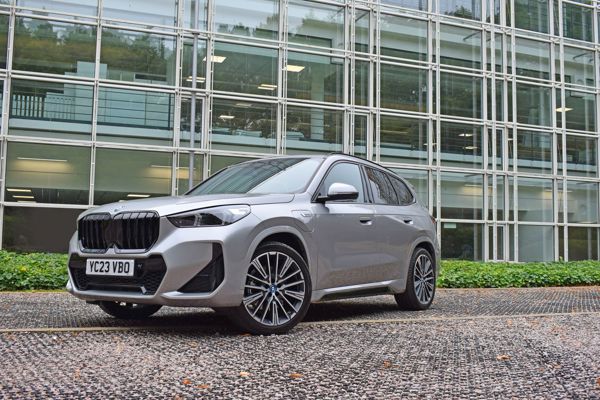Review
The original C-HR broke the mould in the small C-SUV sector with its eye-catching looks and went on to be a huge success for Toyota.
Its replacement is a significant improvement in all areas, with higher quality, improved comfort and driving dynamics. While available only with hybrid powertrains at launch, a plug-in hybrid version will follow next year.
Overview
When the original C-HR was launched in 2017, it looked unlike any other C-segment SUV on the market.
Its sharp, coupe looks and features such as its sculpted rear lights broke the fairly beige trend for SUV design.
The C-HR range was also a huge success for the manufacturer, selling more than 840,000 models across Europe. It remains the manufacturer’s fourth best-selling model across the continent.
Familiarity and the way car design has evolved means the first-generation model doesn’t stand out in the way it once did, however.
Enter the new C-HR. While its styling is not as radical as the model places, it still shares the coupe-like silhouette, while sharp creases, Toyota’s first use of flush-fitting door handles and the new arrow-shaped LED headlights give it a fresh and striking look.
CH-R will be available in four trim levels – Icon, Design, Excel and GR Sport – with pricing starting at £31,290 for the hybrid models. No pricing information is yet available for the PHEV.
Comfort and practicality
One of the smaller changes to the C-HR’s exterior design has also improved the experience for rear seat passengers: one of the few negatives about the first-generation model.
With the original car, the positioning of the rear door handles into its C-pillars meant they were pretty thick, reducing the size of the side windows and having the effect of making it feel a touch darky and gloomy for those in the back.
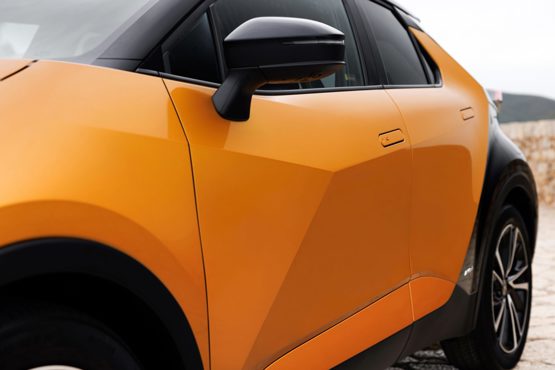
For the new model, the handles have been moved on to the door panels themselves, allowing for larger rear windows, while a fixed panoramic roof also lets more light into the cabin.
Coupled with ample leg and head room for average sized adults, riding in the back is an improved experience.
There continues to be plenty of room for front seat occupants, with the driver in particular benefiting from many of the changes in the new model.
Quality of the build and materials is high, with recycled materials featuring heavily. These include the seat coverings, for example, being made from recycled plastic bottles.
The dashboard features a new digital driver display (seven-inch on the entry-level Icon trim level and 12.3-inch on Design, Excel and GR Sport) and a new centre-mounted touchscreen (eight-inch on Icon, 12.3-inch on higher equipment grades) running Toyota’s latest infotainment system.
Physical controls remain for the key functions such as volume and heating, while the touchscreen display is sharp with classy graphics which will ensure the system won’t appear dated for many years to come.
The boot is 388 litres in the 1.8-litre model, falling to 364 litres in the 2.0-litre variant.
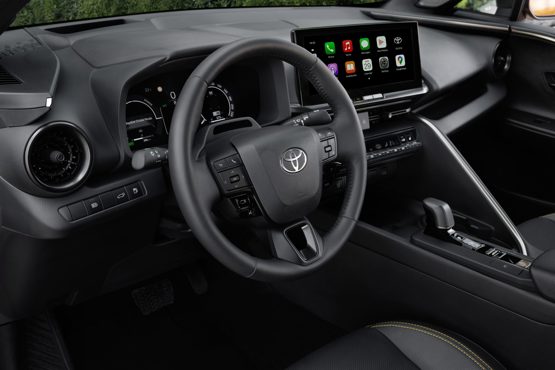
Safety and technology
All versions of the C-HR have the latest Toyota Safety Sense portfolio of active safety and driver assistance feature.
These include improved pre-collision system and proactive driving assist, lane trace assist, adaptive cruise control including new overtake prevention support, which automatically prevents intentional undertaking on dual carriageways and motorways.
Additional safety features include the rear seat reminder system, which alerts the driver if a child or pet has been left on the back seats, while safe exit assist warns if vehicles or cyclists are approaching from the rear when opening a rear door
Standard on Excel grade and available as an option on GR Sport is an advanced safety package which provides lane change assist, front cross traffic alert, a driver monitor camera and an adaptive high-beam headlight system.
Driveability and efficiency
Two hybrid petrol engines are currently available: a 1.8-litre producing 140PS and a 2.0-litre unit offering a maximum of 196PS.
Neither are firecrackers but both deliver their power smoothly through a CVT gearbox, with 0-62mph times of 10.2 seconds and 8.1 seconds respectively.
Refinement is good for both powertrains but, as with any CVT transmission, can seem a little strained under hard acceleration.
Toyota says another focus for the C-HR’s development team was improving the dynamic appeal of the model, and this work has paid off.
The ride is impressively supple, providing a high level of comfort on the road, while the C-HR also handles nicely, feeling agile on fast-flowing roads while also nimble and manoeuvrable in urban environments.
The 1.8-litre models have a WLTP fuel economy from 60.1mpg, with the 2.0-litre powertrain offering efficiency from 57.7mpg.
When it arrives, the plug-in hybrid variant will offer an electric-only range of up to 41 miles.
Specs
| Manufacturer | Toyota |
| Model | C-HR Hatchback |
| Specification | Toyota C-HR Hatchback 2.0 PHEV Design 5dr CVT |
| Model Year | 2024.00 |
| Annual VED (Road tax) | £110 |
| BIK List Price | £39,175 |
| Range | 41.50mile(s) |
| CO2 | 19g/km |
| BIK Percentage | 8% |
| Insurance Group | N/A |
| CC | 1,987 |
| Fuel Type | Petrol PHEV |
| Vehicle Type | Compact SUV |
| Luggage capacity (Seats up) | N/A |
| Doors | 5 |
Running Costs
| P11D | £39,175 |
| Cost per mile | 43.22ppm |
| Residual value | £17,425 |
| Insurance group | N/A |
| Fuel Type | Petrol PHEV |
| Cost per mile | 130.98ppm |
| Fuel | 1.89ppm |
| Depreciation | 127.05ppm |
| Service maintenance and repair | 2.04ppm |
Rivals
Info at a glance
-
P11D Price
£39,175
-
MPG
353.1 (WLTP) -
CO2 Emissions
19g/km -
BIK %
8% -
Running cost
3 Year 60k : £17,425 4 Year 80k : £14,200 -
Fuel Type
Petrol PHEV -
Range
41.50mile(s)



